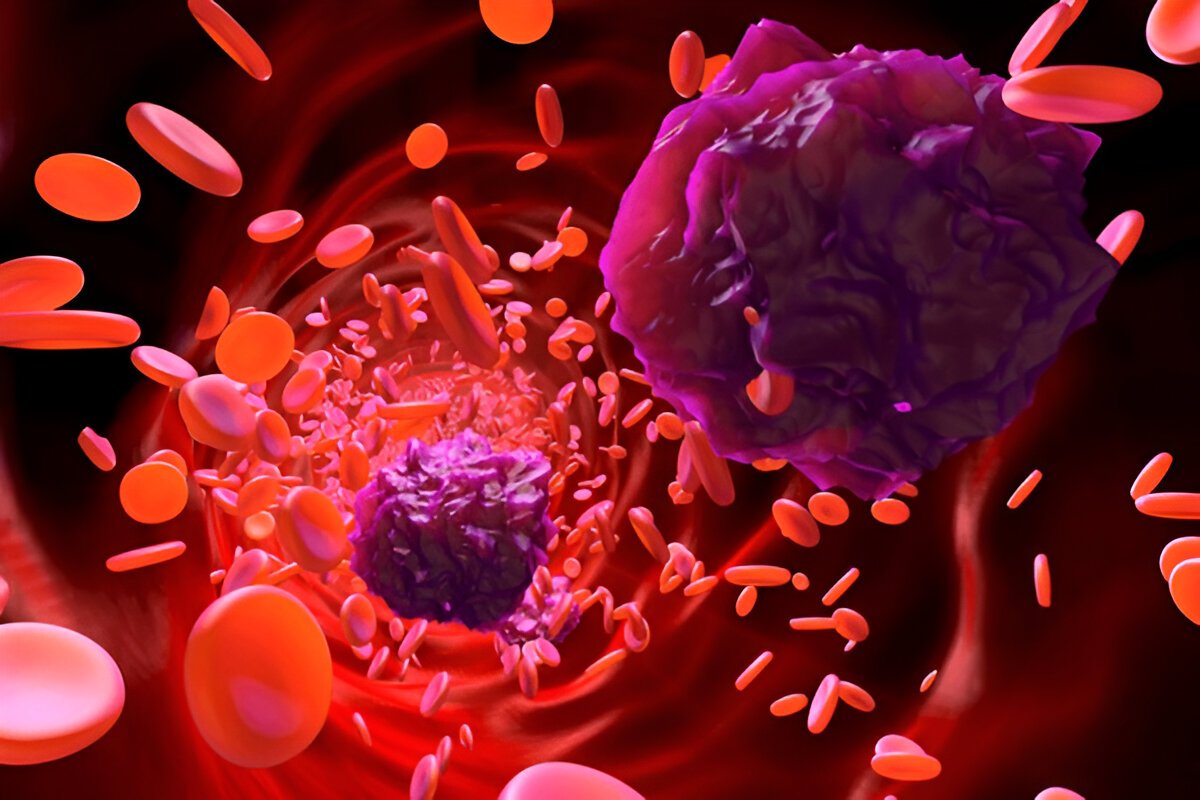
What is blood Cancer?
Blood cancer is a type of cancer that affects the blood, bone marrow or lymphatic system. It occurs when abnormal blood cells grow uncontrollably and interfere with the normal function of healthy blood cells, which are responsible for fighting infections, carrying oxygen and preventing bleeding.
Types of Blood Cancer:
Blood cancer occurs in several forms, with leukemia being the most common type. In addition to leukemia, other less common types include:
- 1. Leukemia – Affects the white blood cells and starts in the bone marrow.
- 2. Lymphoma – Begins in the lymphatic system, which is part of the immune system.
- 3. Myeloma – Targets plasma cells, a type of white blood cell found in bone marrow.
Signs and Symptoms
- Persistent fatigue and weakness
- Frequent infections or fever
- Unexplained weight loss & Paleness or anemia
- Easy bruising or bleeding such as nosebleeds or bleeding gums
- Swollen lymph nodes especially in the neck, armpits or groin
- Bone or joint pain
Cause and risk factors:
- The risk of most blood cancers increases with age, particularly after 60.
- Changes or mutations in the DNA of blood cells can cause them to grow uncontrollably, leading to cancer.
- A family history of blood cancer, such as leukemia or lymphoma, can increase the risk.
- Some types of blood cancer, like certain lymphomas, are more common in men than in women.
- Tobacco use is linked to an increased risk of some forms of leukemia.
- Excess body weight has been shown to be a risk factor for certain types of blood cancer, including multiple myeloma.
Treatment options:
Treatment for blood cancer depends on the type of blood cancer, its stage and the patient’s overall health and age. A combination of therapies is often used to achieve the most effective outcome and improve quality of life.
Common Treatment Approaches
- Chemotherapy: The most common treatment, chemotherapy, uses powerful drugs to kill cancer cells or stop their growth.
- Radiation Therapy: High-energy rays are used to target and destroy cancerous cells, especially when the cancer is localized or causing symptoms in a specific area.
- Stem Cell Transplant (Bone Marrow Transplant): Damaged or cancerous bone marrow is replaced with healthy stem cells, either from the patient (autologous) or a donor (allogeneic). This is often used after high-dose chemotherapy.
- Supportive Care: To manage symptoms and side effects, supportive therapies such as blood transfusions, antibiotics and pain relief are crucial parts of the treatment plan.
Our team of specialists at GEM Cancer Centre will guide you in choosing the most effective treatment plan for your individual needs.
